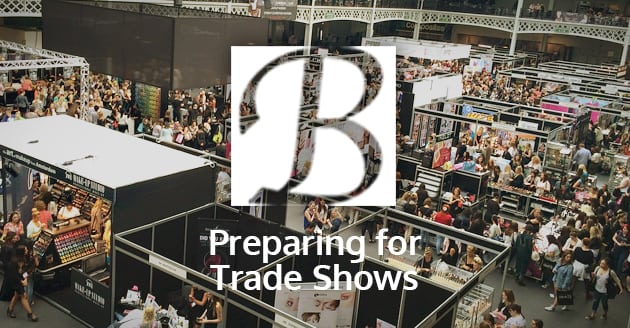Some people love them, some people loathe them. Either way, a trade show can be a tremendous public relations (PR) opportunity, if you’re prepared. There’s more to exhibiting at a trade show than just having an amazing booth.
Know Why You’re Participating in a Trade Show
Before a company begins advertising (or even before it goes to market), it should know the objective of each campaign. The same holds true for trade shows. Attending the show with the highest amount of people may get a lot of cold leads, whereas a smaller, more tailored show might bring a higher rate of warm leads.
Some things to consider before you sign up for a show are:
- Is your main purpose lead generation?
- Are you trying to launch a product?
- How much of your target audience will be at the show?
- What kind of PR opportunities does it provide?
- Is your company local, but the trade show is national?
- Are you trying to strengthen relationships?
- Do you have the time and resources available?
Research the Trade Shows
There definitely is not a shortage of trade shows. In fact, the sheer number can be a little daunting. Before you sign up with the trade show that has the most amount of visitors, think clearly about your purpose in attending the trade show and make sure that your goals line up with the relevancy of the trade show.
Walking a trade show at least once before committing is always recommended. A show may have amazing numbers, but until you go in person and see what types of companies are attending and displaying, you’ll never have a clear picture of what to expect from a particular trade show.
Check the requirements of the trade shows. Many trade shows will require you to add them to your General Liability and Property insurance policy and they often require a certain amount of coverage. If you don’t already have this insurance you can fill out our free Business General Liability and Property Insurance quote.
Analyze Your Budget
Bigger is not always better, especially if you have a tight marketing budget. Depending on where your company is in the market, it might be better to be the big fish in a smaller pond. Unless you have a large budget, attending a large show is not always the wisest idea. Many of the large shows will put the smaller booths in a section far from the main foot traffic.
If you are selling a product, you will need to make sure that you have enough samples or demos available. Otherwise, your booth will be just another information-based booth that will easily get passed over. If you don’t have the budget, consider attending rather than exhibiting.
Be Early to Register and Early to Book Travel
Many trade shows will give a significant discount for early registration. The best spots will fill up quickly. But be aware, some trade shows are notorious for changing booth assignments at the last minute.
Make sure to have all of your travel and accommodations lined up ahead of time. Most major convention centers have adjoining hotels. These hotels book up quickly as the trade show books up. Some competing hotels will provide free shuttle service to the convention centers, others won’t. If you’re unable to get accommodations at the participating hotel, be prepared to pay high parking rates for the convention center. Whatever you decide, register early because even trade shows held in large cities can see hotels book up passed capacity.
Hire a PR Firm
If you don’t already have a PR firm that you use, getting one before a trade show is a really good idea. They can help you get appointments for your booth including media outlets as well as industry insiders. A full booth always looks better than a group of staff sitting around talking to each other.
Many trade shows offer attendee lists prior to the trade show. If you can get your hands on one, pass it off to your PR firm. You can send out announcements about what you’re offering at your booth.
Know Your End Game
Before you attend the trade show, have a clear plan of what you are going to do with all of the leads. Know the software with which you’ll be tracking your leads, craft out your email campaign, and make appointments on your calendar for follow up phone calls and any data entry that is required. Make sure your follow-ups are concise, relate to the purpose of attending the trade show, deliver what you promised, and ask for what you need. Waiting 2 or 3 weeks after the show just won’t cut it.
FOLLOW US:




